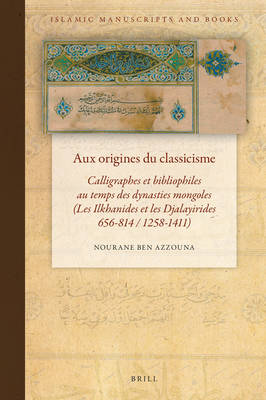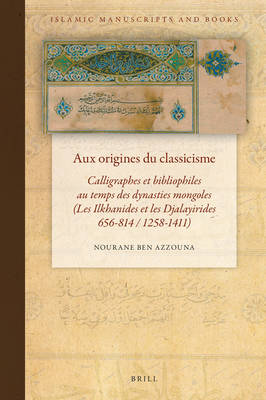
- Afhalen na 1 uur in een winkel met voorraad
- Gratis thuislevering in België vanaf € 30
- Ruim aanbod met 7 miljoen producten
- Afhalen na 1 uur in een winkel met voorraad
- Gratis thuislevering in België vanaf € 30
- Ruim aanbod met 7 miljoen producten
Zoeken
Omschrijving
Ce livre offre une nouvelle lecture de la question de la maturation de la calligraphie et des arts du livre arabo-persan vers des formes et des statuts qui deviendront classiques à partir de la période ilkhanide et djalayiride.
This book proposes a new reading of the question of the maturation of calligraphy and the arts of the book in Arabic and Persian towards forms and statuses that will become classical from the Ilkhanid and Djalayirid period.
This book proposes a new reading of the question of the maturation of calligraphy and the arts of the book in Arabic and Persian towards forms and statuses that will become classical from the Ilkhanid and Djalayirid period.
Specificaties
Betrokkenen
- Auteur(s):
- Uitgeverij:
Inhoud
- Aantal bladzijden:
- 770
- Taal:
- Frans
- Reeks:
- Reeksnummer:
- nr. 17
Eigenschappen
- Productcode (EAN):
- 9789004355545
- Verschijningsdatum:
- 20/09/2018
- Uitvoering:
- Hardcover
- Formaat:
- Genaaid
- Afmetingen:
- 155 mm x 236 mm
- Gewicht:
- 1202 g

Alleen bij Standaard Boekhandel
+ 516 punten op je klantenkaart van Standaard Boekhandel
Beoordelingen
We publiceren alleen reviews die voldoen aan de voorwaarden voor reviews. Bekijk onze voorwaarden voor reviews.








